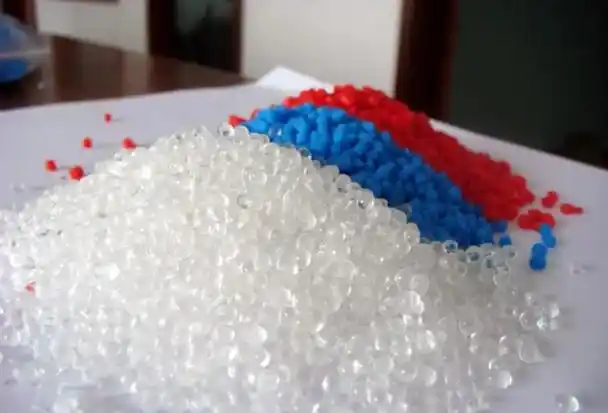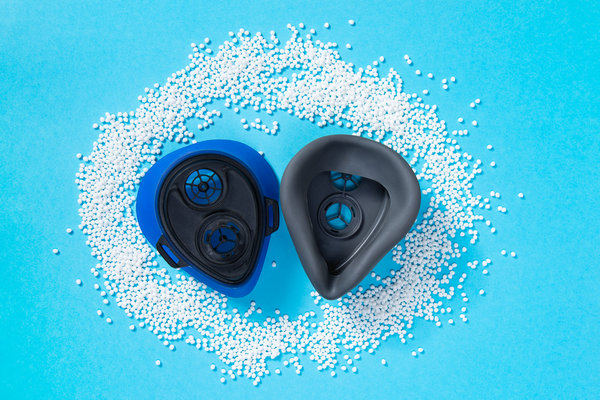As someone who’s been knee-deep in the plastics industry for years, I’ve had my fair share of conversations about combining materials to create innovative products. One question that keeps surfacing is whether polyvinyl chloride (PVC) and thermoplastic elastomers (TPE) can be used together in injection molding. It’s a practical concern for manufacturers aiming to produce parts with both rigid and flexible components, like grips, seals, or medical devices. Drawing from my hands-on experience and technical know-how, I’ll explore the feasibility of co-injection molding PVC and TPE, the challenges involved, and how to make it work. Let’s dive into this with a clear, no-nonsense approach to uncover what’s possible.

Understanding PVC and TPE
To figure out if these materials can be co-injection molded, we first need to get a handle on what they are and how they behave.
PVC: Polyvinyl chloride is a versatile, rigid thermoplastic (though it can be softened with plasticizers to make flexible PVC). It’s widely used for pipes, cable insulation, and medical tubing due to its durability, chemical resistance, and low cost. PVC comes in two main forms: rigid (uPVC) and flexible (plasticized PVC), with processing temperatures typically ranging from 160–190°C.
TPE: Thermoplastic elastomers are a family of flexible, rubber-like materials that can be processed like thermoplastics. They include subtypes like styrenic block copolymers (SBCs, e.g., SEBS), thermoplastic olefins (TPOs), and copolyesters. TPEs are prized for their elasticity and soft-touch feel, making them ideal for overmolded grips, seals, and consumer goods. Processing temperatures vary but often fall between 160–220°C.
While both materials can be injection molded, their chemical compositions and processing requirements differ significantly. PVC is a polar polymer, while many TPEs (like SEBS) are non-polar, which raises questions about their compatibility in a co-injection process.
What Is Co-Injection Molding?
Before we dive deeper, let’s clarify what co-injection molding entails. Also known as overmolding or two-shot molding, it involves injecting two different materials into a single mold to create a part with distinct layers or regions. For example, a rigid PVC core might be overmolded with a soft TPE layer to create a handle with a comfortable grip. The process requires:
Material compatibility: The materials must bond well, either mechanically or chemically, to avoid delamination.
Processing alignment: The materials’ melt temperatures and flow properties should be similar to ensure proper molding.
Equipment: A specialized injection molding machine with multiple barrels or a two-shot mold is typically needed.
The goal is a seamless part that combines the strengths of both materials. So, can PVC and TPE pull this off? Let’s find out.

Is Co-Injection Molding PVC and TPE Feasible?
The short answer is: yes, PVC and TPE can be co-injection molded, but it’s not without challenges. Success depends on material selection, process optimization, and application requirements. Here’s a detailed look at the key factors.
1. Material Compatibility and Bonding
For co-injection molding to work, the two materials need to form a strong bond. PVC and TPE bonding depends on their chemical and physical properties:
Chemical compatibility: Flexible PVC (plasticized with phthalates or other plasticizers) is polar, which can help it bond with certain polar TPEs, like thermoplastic polyurethanes (TPUs) or copolyester-based TPEs. However, non-polar TPEs (e.g., SEBS or TPO) often struggle to bond with PVC without additives or surface treatments.
Mechanical bonding: Even if chemical bonding is weak, a well-designed mold with undercuts or textured surfaces can promote mechanical interlocking between PVC and TPE.
Plasticizer migration: Flexible PVC contains plasticizers that can migrate into the TPE over time, potentially softening it or causing delamination. This is a major concern for long-term performance.
In my experience, pairing flexible PVC with a polar TPE like TPU often yields better bonding than using a non-polar SEBS-based TPE. For rigid PVC, bonding is trickier, and mechanical interlocking or adhesives may be necessary.
2. Processing Considerations
Co-injection molding requires precise control of processing conditions, as PVC and TPE have different needs:
Temperature: PVC processes at 160–190°C, while TPEs vary (e.g., SEBS at 160–200°C, TPU at 190–220°C). If the TPE’s processing temperature is too high, it can degrade PVC, releasing harmful hydrochloric acid (HCl) gas, which also corrodes equipment. Too low, and the TPE may not flow properly.
Mold design: The mold must account for the materials’ different shrink rates. PVC typically shrinks more than TPE, which can cause warping or poor adhesion if not managed.
Injection sequence: In most cases, PVC is injected first as the rigid substrate, followed by TPE as the overmold. This sequence leverages PVC’s structural strength and TPE’s flexibility.
I’ve seen projects go south when temperature profiles weren’t dialed in. One time, we tried overmolding TPU onto PVC at too high a temperature, and the PVC started degrading, leaving a mess in the mold. Adjusting the TPU’s processing window and using a corrosion-resistant mold fixed the issue.

3. Performance and Application Needs
The success of co-injection molding also depends on the part’s intended use. PVC and TPE combinations can offer:
Dual properties: Rigid PVC provides structural integrity, while TPE adds a soft, grippy surface.
Cost efficiency: PVC is cheaper than many TPEs, so using it as the core reduces material costs.
Aesthetics: TPE can enhance the tactile feel and appearance of PVC parts.
However, limitations include:
Durability concerns: Plasticizer migration from flexible PVC can degrade the TPE, reducing bond strength or altering properties over time.
Chemical resistance: TPEs may not match PVC’s resistance to certain chemicals, limiting applications.
Regulatory restrictions: PVC’s use in medical or food-contact applications is tightly regulated due to plasticizer concerns, which may restrict TPE/PVC combinations.
Practical Challenges and Solutions
Co-injection molding PVC and TPE comes with hurdles. Here’s a table summarizing common issues, their causes, solutions, and tips, based on my years of troubleshooting.
|
Challenge |
Cause |
Solution |
Tips |
|---|---|---|---|
|
Poor Bonding |
Chemical incompatibility between PVC and TPE. |
Use polar TPEs (e.g., TPU); apply adhesives or plasma treatment. |
Test bond strength via peel or shear tests. |
|
PVC Degradation |
High TPE processing temperatures release HCl from PVC. |
Lower TPE processing temperature; use corrosion-resistant molds. |
Monitor for HCl gas with proper ventilation. |
|
Plasticizer Migration |
Plasticizers in flexible PVC leach into TPE, causing softening or delamination. |
Use low-migration plasticizers or rigid PVC; select migration-resistant TPEs. |
Conduct aging tests to assess long-term stability. |
|
Warping |
Differential shrinkage between PVC and TPE. |
Optimize mold design; adjust cooling rates. |
Use simulation software to predict shrinkage. |
One project that sticks in my mind involved overmolding SEBS onto flexible PVC for a medical handle. We initially faced delamination due to poor bonding, but switching to a TPU-based TPE and adding a plasma surface treatment improved adhesion significantly. It was a lesson in the importance of material pairing.

Best Practices for Co-Injection Molding PVC and TPE
Drawing from my experience, here are some practical tips to make this process work:
Choose Compatible Materials: Pair flexible PVC with polar TPEs like TPU or copolyesters for better chemical bonding. For rigid PVC, rely on mechanical interlocking or adhesives.
Optimize Processing Parameters: Keep PVC’s processing temperature below 190°C to avoid degradation. Match the TPE’s melt temperature as closely as possible and use a corrosion-resistant mold to handle potential HCl release.
Design the Mold Carefully: Account for shrinkage differences and incorporate features like undercuts for mechanical bonding. Use simulation tools to predict flow and cooling behavior.
Test for Long-Term Stability: Conduct accelerated aging tests to check for plasticizer migration or bond degradation, especially for flexible PVC.
Work with Suppliers: Collaborate with material suppliers for technical data on TPE and PVC compatibility. They often have insights into additives or grades that enhance bonding.
Real-World Applications
Co-injection molding PVC and TPE has practical uses across industries. Here are a few examples I’ve encountered:
Medical Devices: Flexible PVC tubing with TPE grips for ergonomic handling.
Consumer Products: Tool handles with rigid PVC cores and soft TPE overmolds for comfort.
Electrical Components: Cable insulation with PVC for durability and TPE for flexible strain relief.
Automotive: Interior trim with PVC structural parts and TPE soft-touch surfaces.
In one case, a client needed a cost-effective grip for an industrial tool. We used rigid PVC as the core and overmolded it with a TPU-based TPE, achieving a durable, comfortable part that met budget constraints.

Environmental and Regulatory Considerations
Combining PVC and TPE raises some environmental and regulatory questions. PVC’s environmental impact is a hot topic due to its chlorine content and plasticizer use. Flexible PVC, in particular, faces scrutiny in medical and food-contact applications, where regulations like REACH or FDA standards may limit its use. TPEs, while generally considered more eco-friendly, must also comply with application-specific regulations.
From a sustainability angle, co-injection molding can reduce material waste by creating parts with minimal post-processing. However, recycling PVC/TPE parts is challenging due to their differing chemistries. If recycling is a priority, consider using a TPE that’s compatible with PVC in recycling streams or explore mechanical separation methods.
My Take: Is It Worth the Effort?
After years of working with injection molding projects, I’d say co-injection molding PVC and TPE is a viable option if you’re willing to put in the work to get it right. The process offers exciting possibilities for creating parts with dual properties, but it’s not a one-size-fits-all solution. Compatibility issues, processing challenges, and long-term stability concerns require careful planning and testing.
If you’re new to this, start with small-scale trials and lean on material suppliers or molding experts for guidance. The plastics industry is all about pushing boundaries, and combining PVC and TPE is one way to create something truly unique.

Related Questions and Answers
To wrap up, here are some common questions I’ve heard from colleagues and clients, along with quick answers to help you navigate this topic.
Q: Can I co-injection mold rigid PVC with TPE?
A: Yes, but bonding is weaker than with flexible PVC. Use mechanical interlocking or adhesives to improve adhesion.
Q: What TPE is best for overmolding PVC?
A: Polar TPEs like TPU or copolyesters bond better with PVC due to chemical similarities.
Q: How do I prevent PVC degradation during molding?
A: Keep processing temperatures below 190°C and use corrosion-resistant molds to handle potential HCl release.
Q: Is plasticizer migration a big issue with PVC/TPE parts?
A: Yes, especially with flexible PVC. Use low-migration plasticizers and test for long-term stability.
Q: Can PVC/TPE parts be recycled?
A: Recycling is difficult due to differing chemistries, but mechanical separation or compatible TPE grades can help.
If you’re tackling a PVC/TPE co-injection project, I’d love to hear your experiences or answer any questions. Drop a comment, and let’s keep the conversation going!





